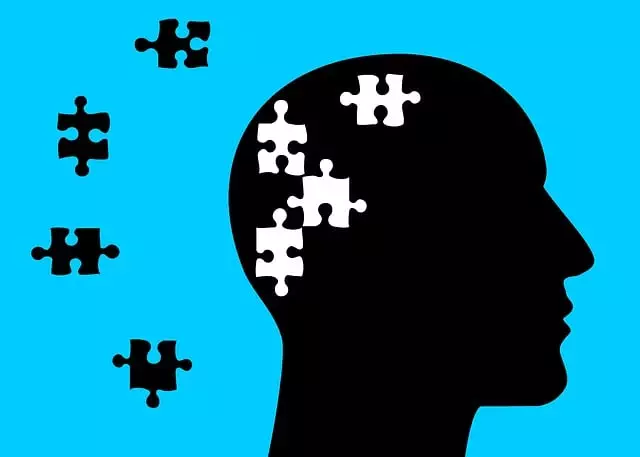The Golden Kaiser Permanente mental health department prioritizes patient safety and well-being through a comprehensive risk assessment strategy, including hazard identification, vulnerable population analysis, environmental evaluation, and behavioral indicator recognition. This structured approach enables the development of tailored interventions for harm minimization, encompassing depression prevention, communication strategies, and self-esteem initiatives. By focusing on early intervention, personalized treatments, and evidence-based practices like Compassion Cultivation, the department creates a supportive environment, empowering patients to manage their mental health effectively. Continuous improvement is measured through data analytics, tracking KPIs such as reduced emergency room visits, to ensure positive patient outcomes and enhance mental health awareness, balancing harm minimization with improved overall well-being. The Golden Kaiser Permanente mental health department number serves as a vital resource for individuals facing mental health challenges.
Risk assessment and harm minimization are essential components of safe practice in mental health care, crucial for protecting vulnerable individuals. This article explores these critical concepts through a comprehensive lens. We begin by establishing a solid understanding of risk assessment, its role in fostering a secure environment, and its application within the context of Kaiser Permanente’s renowned mental health department, recognized for its Golden standard of care. Subsequently, we delve into harm minimization strategies, drawing insights from industry leaders like Kaiser Permanente to guide effective risk management planning.
- Understanding Risk Assessment: A Foundation for Safe Practice
- The Role of Harm Minimization in Mental Health Care
- Implementing a Comprehensive Risk Management Plan
- Measuring Success: Evaluating the Effectiveness of Risk Mitigation Strategies (Focus on Kaiser Permanente's Approach)
Understanding Risk Assessment: A Foundation for Safe Practice

Understanding risk assessment is a cornerstone for any healthcare practice aiming to promote safety and well-being. It involves meticulously examining potential hazards and their likelihood, enabling professionals like those in the Golden Kaiser Permanente mental health department to proactively manage risks. This process includes identifying vulnerable individuals or groups, evaluating environmental factors, and recognizing behaviors that might indicate heightened risk. By taking this structured approach, healthcare providers can develop tailored interventions aimed at harm minimization.
A robust risk assessment framework is crucial for addressing various concerns, including depression prevention. It facilitates the implementation of effective communication strategies to engage clients and build trust. Moreover, it supports initiatives focused on self-esteem improvement by creating supportive environments that encourage open dialogue and promote resilience. This proactive approach not only minimizes potential harms but also enhances the overall quality of care delivered.
The Role of Harm Minimization in Mental Health Care

In the realm of mental health care, harm minimization plays a pivotal role in ensuring patient well-being and fostering effective treatment outcomes. The Golden Kaiser Permanente mental health department number serves as a crucial resource, offering specialized support and guidance for individuals navigating complex mental health challenges. By prioritizing harm minimization, the department aims to create a safe and supportive environment, where patients feel empowered to manage their conditions. This approach is particularly essential in addressing issues like burnout prevention, which is a growing concern among healthcare providers.
Harm minimization strategies are integral to promoting Mental Health Awareness and implementing Burnout Prevention techniques for healthcare professionals. Through proactive measures, such as early intervention, comprehensive risk assessment, and personalized treatment plans, the mental health department at Kaiser Permanente strives to minimize potential harms and optimize patient care. These efforts contribute to a holistic approach, ensuring that patients not only receive medical attention but also develop coping mechanisms and resilience to manage their mental health effectively in the long term.
Implementing a Comprehensive Risk Management Plan

Implementing a comprehensive risk management plan is a cornerstone of effective harm minimization within mental health care settings, such as those found in the Kaiser Permanente mental health department. This involves systematically identifying, assessing, and mitigating potential risks that could impede patient safety and well-being. A robust plan aligns with evidence-based practices like Compassion Cultivation, fostering an environment where patients feel understood and supported.
By integrating Self-Care Practices into the risk assessment process, healthcare providers can proactively address their own mental health needs, thereby enhancing their ability to support patients facing various challenges. Mental Illness Stigma Reduction Efforts also play a pivotal role, cultivating an inclusive atmosphere that encourages open conversations and reduces barriers to care. This holistic approach ensures that both patients and practitioners are equipped to navigate risks effectively, ultimately promoting positive outcomes in the Kaiser Permanente mental health department and similar facilities.
Measuring Success: Evaluating the Effectiveness of Risk Mitigation Strategies (Focus on Kaiser Permanente's Approach)

Measuring success in risk assessment and harm minimization planning is a critical aspect often exemplified by Kaiser Permanente’s approach within its mental health department. The organization employs a comprehensive strategy that goes beyond mere intervention; it focuses on evaluating the effectiveness of mitigation strategies to ensure positive outcomes. This involves tracking key performance indicators (KPIs) related to patient well-being, such as reduced emergency room visits and improved mood management.
By utilizing data analytics, Kaiser Permanente can assess whether its interventions are fostering inner strength development among patients. This data-driven approach allows for continuous improvement in risk assessment practices, ensuring that resources are allocated efficiently and that the mental health department stays aligned with the latest research and best practices. The Golden number, as it were, for success lies not only in minimizing harm but also in enhancing Mental Health Awareness and overall patient satisfaction.
Risk assessment and harm minimization planning are essential components of safe practice within the mental health care sector. By understanding risk assessment and implementing comprehensive risk management strategies, such as those employed by the renowned Kaiser Permanente mental health department (a golden standard in the industry), healthcare providers can effectively mitigate risks and promote positive patient outcomes. This article has outlined key steps, from understanding risk assessment to measuring success through evaluation, providing a roadmap for improved safety and care.






